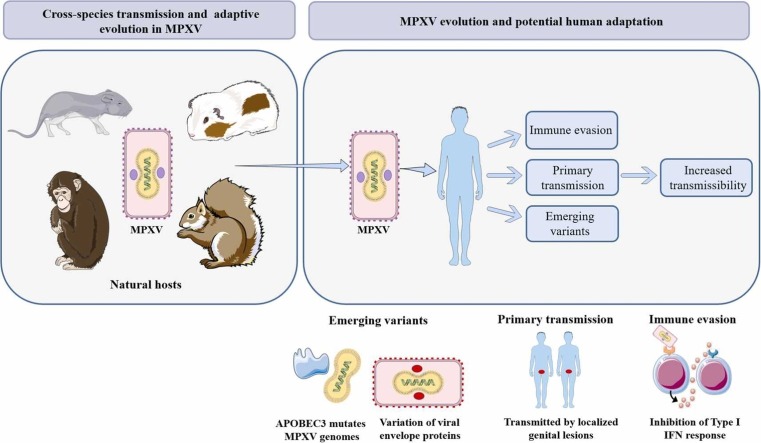- Record: found
- Abstract: found
- Article: not found
The evolving epidemiology of monkeypox virus

Read this article at
Abstract
Monkeypox, caused by the monkeypox virus (MPXV), is a zoonotic disease endemic mainly in West and Central Africa. As of 27 September 2022, human monkeypox has occurred in more than 100 countries (mostly in non-endemic regions) and caused over 66,000 confirmed cases, which differs from previous epidemics that mainly affected African countries. Due to the increasing number of confirmed cases worldwide, the World Health Organization (WHO) has declared the monkeypox outbreak as a Public Health Emergency of International Concern on July 23, 2022. The international outbreak of human monkeypox represents a novel route of transmission for MPXV, with genital lesions as the primary infection, and the emergence of monkeypox in the current outbreak is also new, as novel variants emerge. Clinical physicians and scientists should be aware of this emerging situation, which presents a different scenario from previous outbreaks. In this review, we will discuss the molecular virology, evasion of antiviral immunity, epidemiology, evolution, and detection of MPXV, as well as prophylaxis and treatment strategies for monkeypox. This review also emphasizes the integration of relevant epidemiological data with genomic surveillance data to obtain real-time data, which could formulate prevention and control measures to curb this outbreak.
Graphical Abstract
Related collections
Most cited references137

- Record: found
- Abstract: found
- Article: found
The changing epidemiology of human monkeypox—A potential threat? A systematic review

- Record: found
- Abstract: found
- Article: found
Clinical features and management of human monkeypox: a retrospective observational study in the UK
- Record: found
- Abstract: found
- Article: not found

